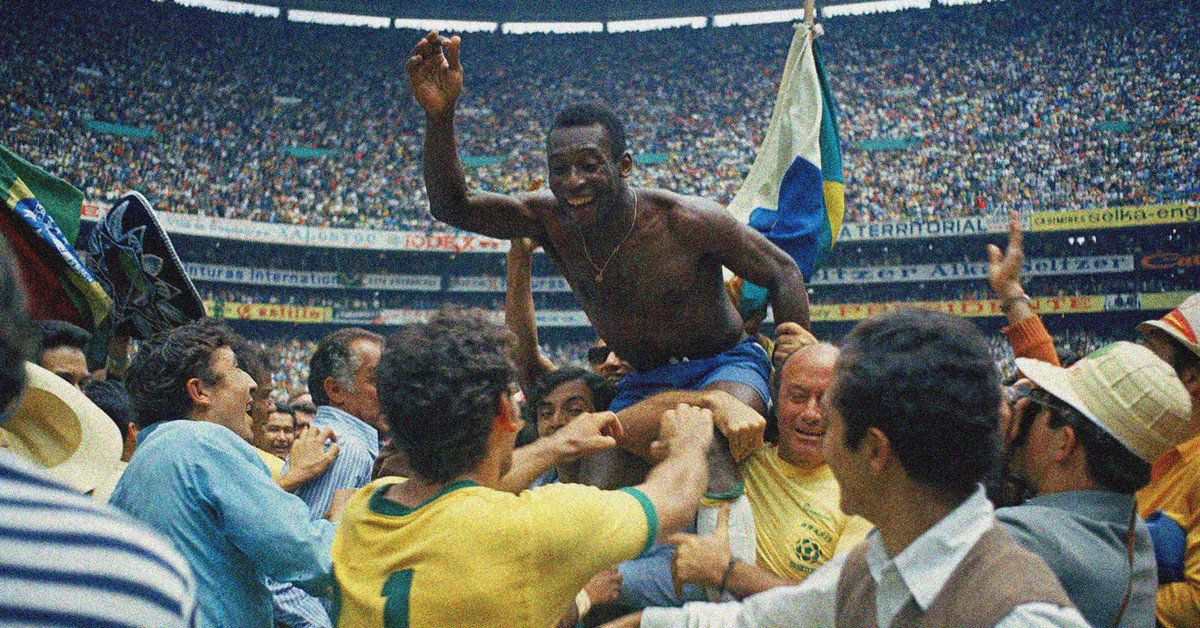Two years ago this month, soccer lost arguably its greatest-ever player in Edson Arantes do Nascimento — better known worldwide simply as Pelé.
Pelé died on Dec. 29, 2022, at age 82, but left behind a legacy that served as the bridge between the sport’s growing popularity — specifically here in the United States — and the machine soccer has become as big name stars and even bigger television contracts to broadcast ‘The Beautiful Game’ (Pelé’s words, not ours) in nearly every nation, can pay homage to the impact Pele made on the game.
With that said, we took a look back at the four things you may not know about Pelé, and the reason why if you’re a soccer fan, it’s important never to forget.
He singlehandedly popularized the game in America
In 1975, Pelé decided to emerge from retirement following a 19-year career with Brazilian giants Santos to play for the famed New York Cosmos team in the now-defunct North American Soccer League. The NASL at the time, was the modern-day version of Major League Soccer, just with far less teams.
While some might’ve considered Pelé past his prime at that point, it didn’t stop him from drawing massive crowds to Cosmos games, like the nearly 63,000 who witnessed a 37-year-old Pelé score a hat trick against the Tampa Bay Rowdies inside Giants Stadium, or the near 78,000 people who returned to same stadium to watch Pele lead the Cosmos to an 8-3 rout of the Fort Lauderdale Strikers.
But the biggest impact was Pelé’s final ever club game in an exhibition between between the Cosmos and his former Santos team. The game sold out Giants Stadium and was broadcast on ABC’s Wide World of Sports, which was the equivalent of being primetime on ESPN — an unheard of feat for soccer at the time.
583 games, 569 goals
You read that correctly. In a club career that began in 1956 for a then 16-year-old kid from Tres Coracoes, Brazil, ended in 1974 with Pelé appearing in just shy of 600 games in a Santos uniform and scoring 569 goals, just shy of a goal a game over an 18-year career in Brazil.
The Brazilian ranks No. 3 all-time in goals for both club and country (762), and is one of four players of Latin descent to list among the top 10 all-time (No. 2 Argentina’s Lionel Messi, 850; No. 4 Brazil’s Romario, 756; No. 5 Spanish-Hungarian Ferenc Puskas, 725).
:no_upscale()/cdn.vox-cdn.com/uploads/chorus_asset/file/25781474/1450708774.jpg)
Racked up the records
On the international stage, Pelé was king for a Brazilian team known for its creativity, flair and artistry on the field. Led by Pelé’s 77 goals in 92 appearances for Brazil, the tiny nation won three FIFA World Cups (1958, 1962, 1970).
Ready for Pelé’s accomplishments in that span?
- In 1958, he became the youngest goalscorer in a World Cup, at the age of 17, scoring a hat trick in semifinal against France.
- He became the youngest player to play in a World Cup final when Brazil took on Sweden, only to follow that up as the youngest player to score in a World Cup final when he scored the game winner to give Brazil its first of three world titles in 12 years
- And he still holds the record for the most hat tricks in international soccer all-time with seven. In all for both club and country? 92.
:no_upscale()/cdn.vox-cdn.com/uploads/chorus_asset/file/25781466/1083844.jpg)
Man on the field, giant off of it
In addition to his legendary status on the field, Pelé is known for being a humanitarian.
Mainly working with organizations like the United Nations as an ambassador, he was named Citizen of the World by the UN in 1977, received the coveted International Peace Award in 1978, was given the Global Citizen Award by the World Economic Forum in 2018, and was named as one of Time Magazine’s 100 Most Important People of the 20th Century in 1999.
In 2000, former South African president Nelson Mandela in a speech in which he presented Pelé with yet another peace award, called the Brazilian, “an enduring model for all athletes; in fact for all of us the world over to admire and emulate.”

